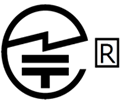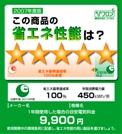Note: This page covers approvals for electrical equipment only.
For other goods or industrial equipment, please review our JIS Certification Services.
The PSE Law and its regulations cover electrical safety and EMI requirements for 457 types of electrical products. Under the PSE Law, electrical products are divided into two risk-based categories.

Click "Service Menu" in the upper right corner and select the "Electrical Safety (PSE Mark)" for more details.
Most household electrical products are subject to the PSE self-declaration scheme. A third-party conformity assessment scheme was developed to give consumers more information about the safety and quality of the products they use in their homes.
Displaying the S-JQA mark next to the circle PSE mark on self-declaration products can show dealers and consumers that your brand is committed to the safety of its users.
Foreign manufacturers may derive extra value from the S-JQA certification scheme as it uses the same standards that are required by the PSE Law (safety & EMI) and can reduce the risk of costly recalls due to misunderstanding product requirements.

Click "Service Menu" in the upper right corner and select the "Electrical Safety (S-JQA)" for more details.
Only 10 types of products are subject to mandatory marking under the PSC Law and they are divided into two risk-based categories.

JQA is a registered CAB for the product category of portable lasers (laser pointers, laser scanners, toys with lasers, etc...)
Click "Service Menu" in the upper right corner and select the "Consumer Safety (PSC Mark)" for more details.
The CMJ Scheme is utilized much like NRTL-listed components in the US. Using CMJ-registered components and materials does not exempt the end product from PSE approval, but can greatly reduce testing cost and lead time for PSE approval or S-JQA certification.
Insulated wires, switches, capacitors, and other components and materials can be registered under 15 categories in the CMJ Scheme.
Components and materials manufacturers planning to have their products used in electrical equipment sold in the Japanese market are advised to consider obtaining CMJ Registration.
Manufacturers planning to sell end products in Japan, are advised to consider using CMJ-registered components and materials to ensure compliance and reduce the costs of later approvals.

Click "Service Menu" in the upper right corner and select the "CMJ Component Registration" for more details.
The Japan Radio Law covers all products which utilize the radio spectrum and operate under 3 THz. In some cases, this includes products that are not radio communications devices, such as discharge lamps and induction heating devices. Simply applying the PSE mark to such products may be insufficient for entry into the Japanese market.
Specified Radio Equipment (eg. Bluetooth, WiFi, etc...) and High-Frequency Devices (eg. most ISM devices, including microwaves, arc-welders, ultrasonic devices, etc... ) are subject to mandatory approvals.
A voluntary scheme also exists for Extremely Low Power (ELP) devices which is operated by JAAMA & EMCC.
Click "Service Menu" in the upper right corner and select the "Radio Law" for more details.

The PMDL categorizes medical devices into 4 classes.
Specified Controlled Medical Devices and Specified Highly-controlled Medical Devices require certification from a Registered Certification Body (RCB) such as JQA.
Only Japanese companies that are Marketing Authorization Holders are eligible to apply.
Click "Service Menu" in the upper right corner and select the "Medical Device Certification" for more details.
EMC of low-power, DC-input products is generally not covered by the PSE Law or Radio Law. To supplement this issue, a voluntary scheme was established in Japan which is operated by the VCCI Council.
Although voluntary, the VCCI mark appears on many IT and multimedia devices in Japan. The scheme itself requires an EMI test report from a registered lab and self-registration/self-marking.
JQA is a registered lab and can provide test reports for VCCI registration, but most manufacturers use their own testing facilities.

Manufacturers must become a member of VCCI to display the mark. Please review the VCCI website for details about becoming a member.
As of December 2018, over thirty specified products must meet "top runner standards." The law applies a self-declaration scheme and manufacturer's test reports are acceptable for all categories.
Making energy efficiency information available to consumers is required under the law. Voluntarily, a green e-mark may be displayed on products that meet the standard. And an orange e-mark may be displayed on products that do not meet the standard.


When displayed for retail sale, some products such as refrigerators and air conditioners, are required to display a 5-star ratings label.
The Japanese energy efficiency program differs from most other countries. The requirement states that the weighted average efficiency of the products imported/manufactured annually must fall within the "top runner standard" range. This allows for an importer to import some lower efficiency products if they also import enough higher efficiency products to offset the difference within the same year.
More information on this topic is available in METI's page(Japanese).
As of December 2018, the following 7 specified products are obligated to display an orange label if they don't meet the limits for 6 hazardous substances specified in the standard JIS C 0950.


An orange R-mark must be displayed on products that do not meet the standard.
A green G-mark may be voluntarily displayed on products that meet the standard (J-MOSS mark, owned by JEITA).
RoHS in Japan is a self-declaration scheme, and third-party testing is not required.
See METI's page (Japanese)or JEITA's page (English) on this topic for more details.

